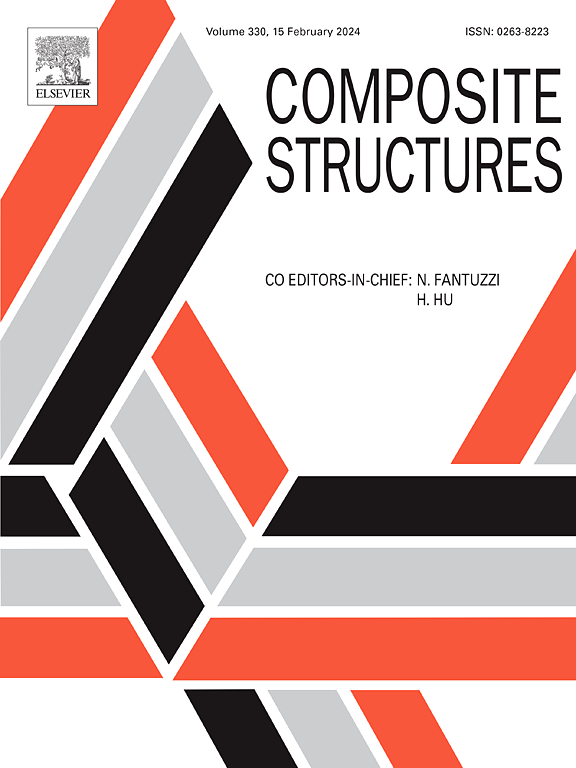建立了一种有效的海底电力电缆弯曲受力分析模型
IF 6.3
2区 材料科学
Q1 MATERIALS SCIENCE, COMPOSITES
引用次数: 0
摘要
海底电力电缆(spc)中众多螺旋组件的复杂相互作用,特别是那些由于初始残余应力而存在重大接触问题的组件,使其建模复杂化,并限制了我们对这些结构的理解。本文提出了一种有效的预应力混凝土弯曲局部力学分析建模方法。该方法基于三个关键方面:(1)构建合适的有限元,以减少所需的单元数量;(2)采用接触阻尼来解决接触界面处初始残余应力的影响;(3)在重复单元格(RUC)上应用周期性边界条件以减小模型尺寸。通过对单核和三核SPC样品的大量测试,验证了该方法的准确性,并通过将这些结果与传统全尺寸模型的结果进行比较,证实了该方法的有效性。在验证之后,该模型被用来说明SPCs在弯曲下的局部力学行为,无论是在整体水平还是在部件水平。该模型为电缆工程师提供了一个强大的工具,可以更深入地了解spc的内部相互作用。本文开发的所有相关代码都可以在https://pan-fang.github.io/Codes/上免费获得。本文章由计算机程序翻译,如有差异,请以英文原文为准。
Development of an effective modelling method for the mechanical analysis of submarine power cables under bending
The complex interplay of numerous helical components within submarine power cables (SPCs), especially those with significant contact issues due to initial residual stress, complicates their modelling and limits our understanding of these structures. In this paper we proposed an effective modelling method designed for the local mechanical analysis of SPCs under bending. The method was developed based on three key aspects: (1) constructing appropriate finite elements to reduce the number of elements required; (2) employing contact damping to address the effects of initial residual stress at contact interfaces; and (3) applying periodic boundary conditions on a repeated unit cell (RUC) to reduce the model size. The accuracy of this method was validated through extensive testing on both single-core and three-core SPC samples, and its efficiency was confirmed by comparing these results with those obtained from traditional full-scale models. Following validation, the model was employed to illustrate the local mechanical behaviours of SPCs under bending, both at the overall level and at the component level. This model serves as a powerful tool for cable engineers, offering deeper insights into the internal interplays of SPCs. All relevant codes developed in this paper are freely available at https://pan-fang.github.io/Codes/.
求助全文
通过发布文献求助,成功后即可免费获取论文全文。
去求助
来源期刊

Composite Structures
工程技术-材料科学:复合
CiteScore
12.00
自引率
12.70%
发文量
1246
审稿时长
78 days
期刊介绍:
The past few decades have seen outstanding advances in the use of composite materials in structural applications. There can be little doubt that, within engineering circles, composites have revolutionised traditional design concepts and made possible an unparalleled range of new and exciting possibilities as viable materials for construction. Composite Structures, an International Journal, disseminates knowledge between users, manufacturers, designers and researchers involved in structures or structural components manufactured using composite materials.
The journal publishes papers which contribute to knowledge in the use of composite materials in engineering structures. Papers deal with design, research and development studies, experimental investigations, theoretical analysis and fabrication techniques relevant to the application of composites in load-bearing components for assemblies, ranging from individual components such as plates and shells to complete composite structures.
 求助内容:
求助内容: 应助结果提醒方式:
应助结果提醒方式:


